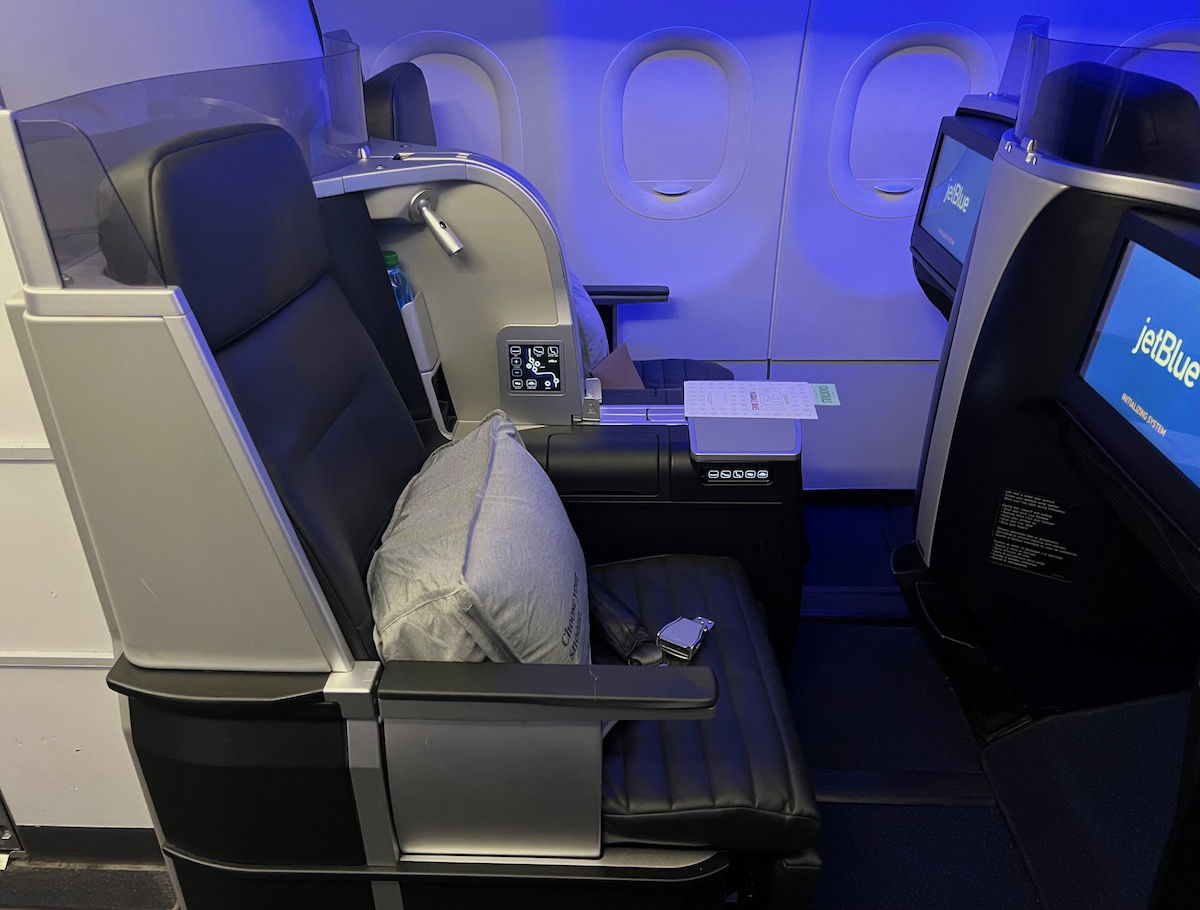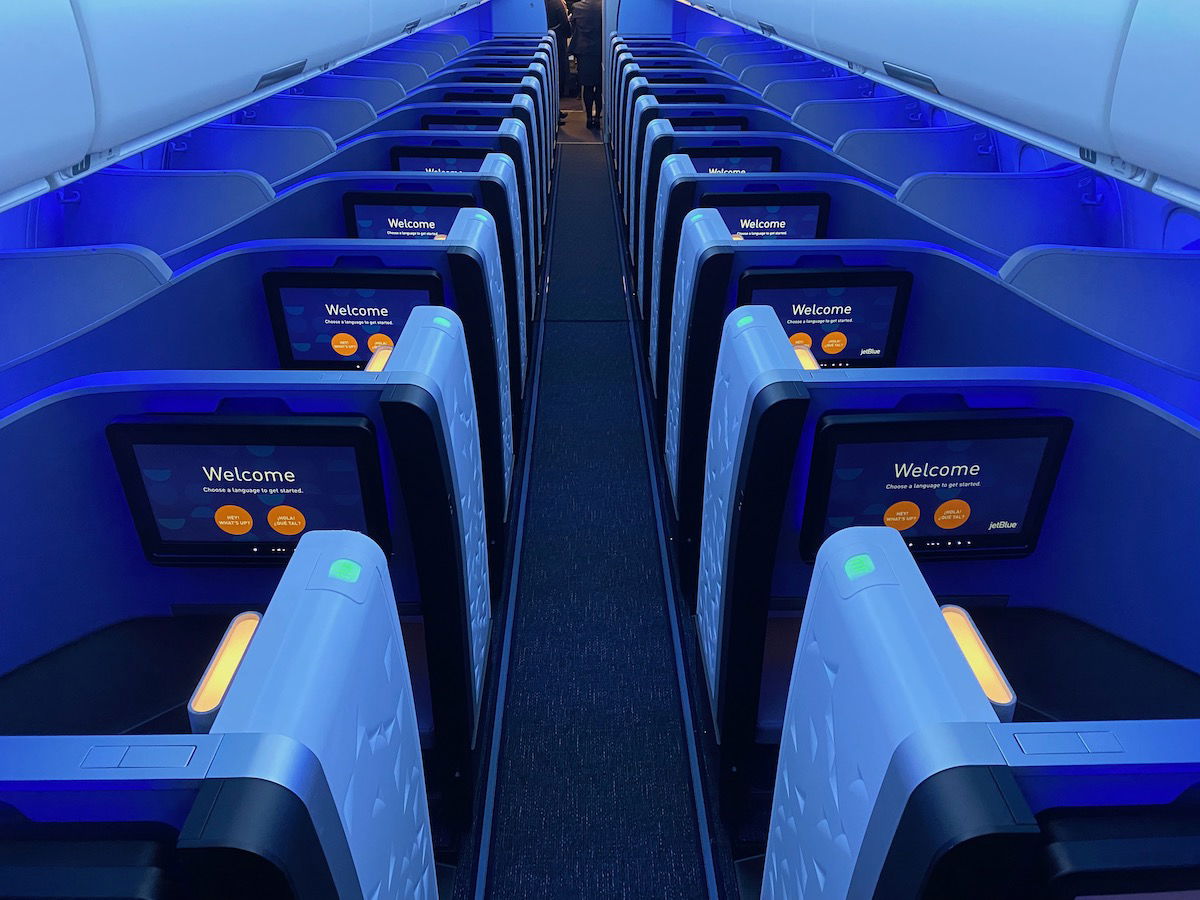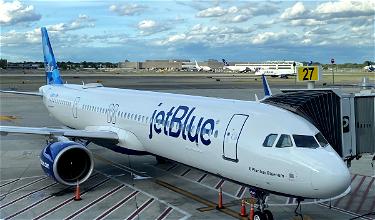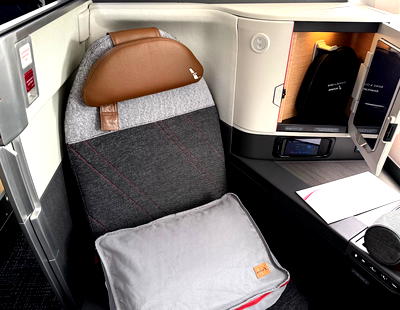Barclays and JetBlue issue a portfolio of co-branded credit cards, including two personal cards and one business card. In this post I wanted to provide a review of the card portfolio, and under what circumstances it makes sense to pick up a JetBlue credit card.
In this post:
JetBlue Credit Card Basics For November 2025
In this post I wanted to focus primarily on the JetBlue Plus Card and JetBlue Business Card, since these are the premium JetBlue cards that offer the most perks. The cards have a lot of overlap, but also some minor differences, so I’ll highlight those as we go along.
JetBlue Credit Card Annual Fee
Both the JetBlue Plus Card and JetBlue Business Card have an annual fee of $99. There’s no cost to add additional users to the card. This is roughly in line with the annual fees on most mid-range airline credit cards, which typically have an annual fee of just under $100.
JetBlue Credit Card Sign-Up Bonus
At the moment the JetBlue Plus Card and JetBlue Business Card have different sign-up bonuses for new cardmembers:
- The JetBlue Plus Card is offering 60,000 TrueBlue points after spending $1,000 within the first 90 days
- The JetBlue Business Card is offering 50,000 TrueBlue points after spending $1,000 within the first 90 days, plus 10,000 points after adding an employee card and having them make a purchase in the first 90 days
I value TrueBlue points at ~1.3 cents each, to give you a sense of how much value you could get from those bonuses. These are pretty good bonuses for these cards, though we’ve seen bigger bonuses on both cards in the past. If you can wait, I’d probably recommend doing so until there’s a bigger bonus again.
See this post for the general restrictions when it comes to getting approved for Barclays credit cards.

JetBlue Credit Card Rewards Structure
Both the JetBlue Plus Card and JetBlue Business Card offer anywhere from 1-6x points per dollar spent:
- Both cards offer 6x TrueBlue points for JetBlue purchases
- The JetBlue Plus Card offers 2x TrueBlue points on restaurant and grocery store purchases, while the JetBlue Business Card offers 2x TrueBlue points on restaurant and office supply store purchases
- Both cards offer 1x TrueBlue points for all other purchases
Based on my valuation of TrueBlue points, I’d say that’s a solid return for JetBlue spending, but otherwise there are much more compelling cards out there. The primary reason you’d want to spend on this card is in order to earn Mosaic status, as I’ll explain below.

JetBlue Credit Card Perks
The primary reason you’ll want to consider the JetBlue Plus Card or JetBlue Business Card is because of the perks you can get. Some benefits you get just for having the card, while other benefits you get for putting spending on the card. These perks are identical between the personal and business versions of the card, so let’s go over the details.
Anniversary Bonus Of 5,000 Points
Every year on your account anniversary, you’ll receive 5,000 TrueBlue points. As mentioned above, I value TrueBlue points at 1.3 cents each, so to me those points are worth ~$65. That recoups most of the card’s annual free right there.
10% Refund On JetBlue Award Redemptions
When you redeem your JetBlue TrueBlue points for an award flight, you’ll receive 10% of your points back as a bonus. For example, if you redeemed 20,000 points, you’d get 2,000 points deposited back into your account. The bonus will typically post to your account four to six weeks after you take your award flight. There’s no limit to how many points you can get back through this method.

Free First Checked Bag On JetBlue
Cardholders can receive a free first checked bag for themselves and up to three companions on the same reservation when they use their card to purchase a ticket. JetBlue charges $35 one-way for a checked bag, so if you were four people each traveling roundtrip with a checked bag, you could save $280 on a single trip. That’s huge.
50% Inflight Savings On JetBlue
You can save 50% on inflight purchases of food and alcoholic drinks when paying with your JetBlue Plus Card or JetBlue Business Card. This likely won’t save you hundreds of dollars per year, but it could add up.
Spend Your Way To JetBlue Mosaic Elite Status
The primary reason you’d want to consider spending money on a JetBlue credit card is in order to earn TrueBlue Mosaic elite status. There are four tiers of Mosaic elite status, with the following requirements:
- JetBlue Mosaic 1 requires 50 tiles
- JetBlue Mosaic 2 requires 150 tiles
- JetBlue Mosaic 3 requires 200 tiles
- JetBlue Mosaic 4 requires 250 tiles
For those not familiar with the concept of tiles, you earn one tile per $100 spent with JetBlue, and one tile per $1,000 spent on a JetBlue credit card. In other words, spending $50,000 on a JetBlue credit card would earn you Mosaic 1, while spending $250,000 on a JetBlue credit card would earn you Mosaic 4.
The benefits of Mosaic status vary based on the tier. All Mosaic members receive priority boarding, free checked bags, same day flight changes, priority check-in, priority security, and dedicated phone support. Then the additional perks vary by tier, but include everything from complimentary Even More Space seating, to JetBlue Mint upgrades. See my guide to JetBlue Mosaic elite status.

Is The JetBlue Credit Card Worth It?
The JetBlue Plus Card and JetBlue Business Card could absolutely be worth applying for and holding onto long term. A few general thoughts:
- In general I wouldn’t recommend putting much spending on these cards, unless you’re going for Mosaic elite status, in which case spending money on these cards is your best bet
- If you fly JetBlue with any frequency, having one of these cards is almost certainly worth it; the 5,000 anniversary bonus points offsets most of the annual fee, the 10% refund on award redemptions will earn you even more points, and then the savings on checked bags and inflight purchases will allow you to come out way ahead
I have a JetBlue credit card — I don’t fly the airline that often, but even so, I at least break even on the card, and some years come out significantly ahead.
What About JetBlue’s No Annual Fee Card?
As you can see, I’ve focused on JetBlue’s premium credit cards, the JetBlue Plus Card and JetBlue Business Card. However, there’s also the JetBlue Card, which is a no annual fee personal card. How does that card compare?
- The JetBlue Card offers a welcome bonus of 10,000 TrueBlue points after spending $1,000 within the first 90 days
- The JetBlue Card offers 3x points on JetBlue purchases, 2x points on restaurant and grocery store purchases, and 1x points on everything else
- The card offers 50% savings on inflight purchases
- The card doesn’t offer anniversary bonus points, an award redemption refund, a first checked bag fee, or the ability to spend your way to Mosaic status
Personally I feel strongly that the premium cards are more rewarding. At an absolute minimum, you could apply for the personal premium card with the bigger bonus, and then after a year should be able to downgrade to the JetBlue Card, if the JetBlue Plus Card isn’t doing it for you.

The Best JetBlue Credit Card Alternatives
When it comes to spending money on credit cards, for most consumers I think there are much better options than JetBlue’s card portfolio.
On the most basic level, you can’t beat the rewards structure of the no annual fee Citi Double Cash® Card (review). The card is extremely rewarding and flexible, as it offers 1% cash back when you make a purchase, and 1% cash back when you pay for that purchase. Rewards earned on this card can even be converted into Citi ThankYou points, to earn you travel rewards.
Why am I even viewing this as a competitor? Because JetBlue TrueBlue is a revenue based frequent flyer program, and each point gets you at most 1.5 cents (or so) toward the cost of a ticket on JetBlue. Why earn one TrueBlue point per dollar spent when you could earn the equivalent of 2.0 cents back per dollar spent, which you could apply toward anything?
Furthermore, also keep in mind that JetBlue TrueBlue partners with major transferable points currencies, including Amex Membership Rewards, Chase Ultimate Rewards, and Citi ThankYou. Therefore you could also earn JetBlue TrueBlue points with one of the following cards, which are among my favorites:
- The American Express® Gold Card (review)
- The Chase Sapphire Preferred® Card (review)
- The Citi Strata Premier® Card (review)
Bottom Line
Barclays and JetBlue issue three co-branded credit cards, which have the potential to be lucrative for those who fly JetBlue with any frequency. In particular, the premium cards offer some fantastic perks that I’d argue more than justify the annual fee. Between the anniversary bonus points, award ticket refunds, 50% savings on inflight purchases, free checked bags, and ability to spend your way to Mosaic status, there’s a lot of value to be had.
That being said, I would only spend money on these cards if you’re going for Mosaic status. Otherwise there are much more rewarding cards for everyday spending.
Do you have a JetBlue credit card? If so, how much value have you gotten from the card?



Hey Peggy, Looks like the 80,000 bonus came back for the JetBlue Plus card. (11/14 – 12/3/2024).
In August 2024 Jetblue is offering a special - 80,000 joining points for the JetBlue Plus card, with only a $1,000 spend required in 90 days. I can fly roundtrip to british isles next May.
"The JetBlue Card offers a welcome bonus of 10,000 TrueBlue points after spending $1,000 within the first 90 days."
I believe you meant to write "60,000 TrueBlue points.
60K points is for the Plus and Business cards. The standard no annual fee card is 10K.
Ben. You talked about downgrading the cards after one year. You might want to check on that....Barclays is a VERY BAD bank to deal with, only Capital One being worse. I wouldn't bank of downgrades being a possibility. And while I mention it. Capital One is so bad, they never allow downgrades and hit you with a hard inquiry for credit line increases on ALL 3 credit bureaus. I stick to Amex and Chase but agree the Jetblue Premium card is a winner if you fly jetblue.